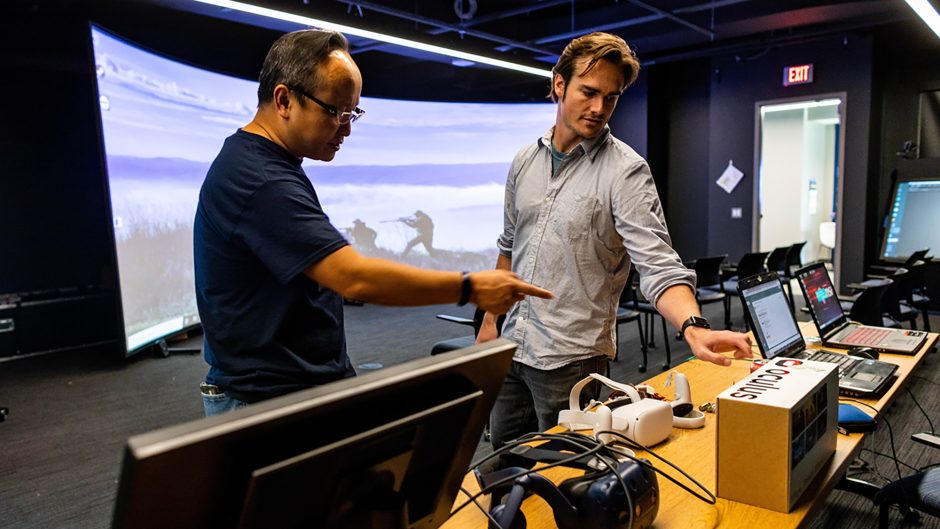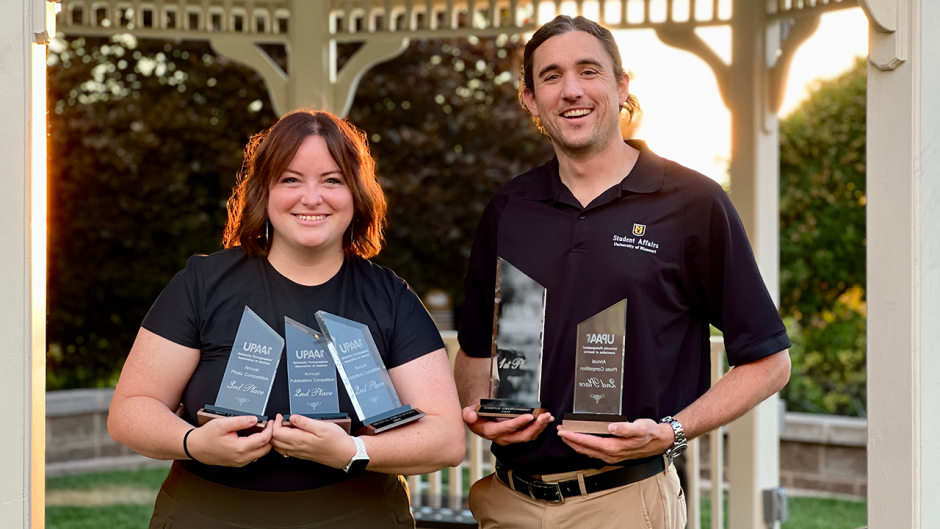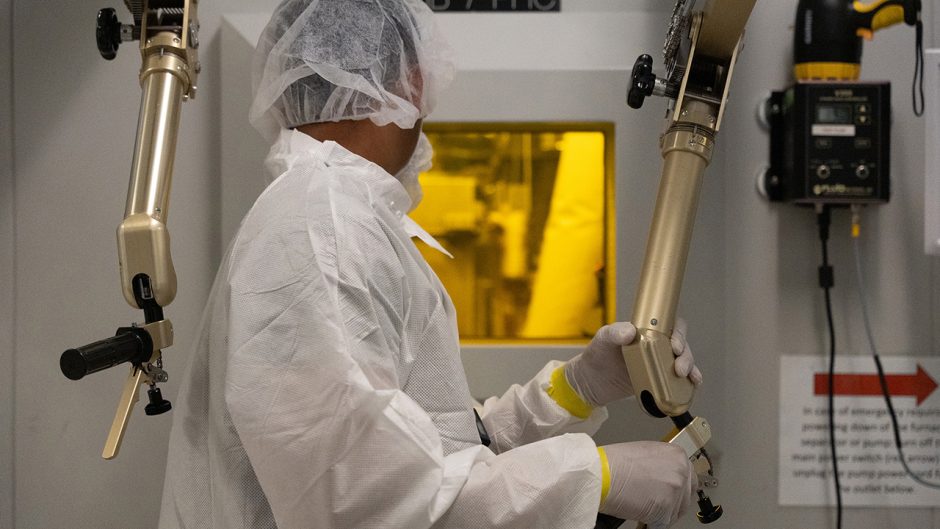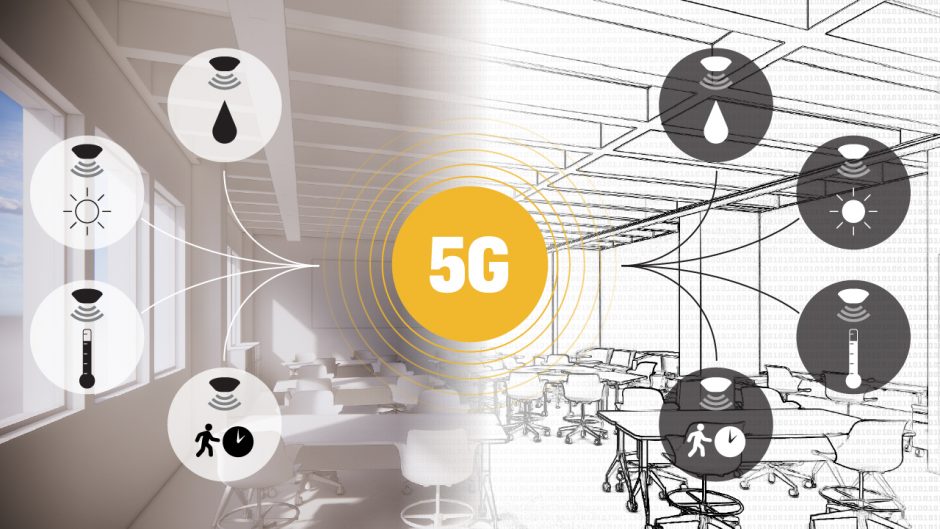
Researchers plan to build an innovative test site on MU’s campus that will combine 5G connectivity in the Innovation Space in Cornell Hall with smart building sensors that track a building’s energy use and operations efficiency, which are located in Stanley Hall.
Dec. 3, 2021
Contact: Eric Stann, 573-882-3346, StannE@missouri.edu
On the road to a sustainable future, buildings need to operate smarter.
That’s an initiative Jong Bum Kim, an assistant professor of architectural studies at the University of Missouri, is championing. He’s leading a team of researchers to innovate how a building’s energy use is detected, analyzed and optimized in order to decrease greenhouse gas emissions and energy consumption.
“For example, when a building’s HVAC system is in constant use, regardless of the changing conditions outside, there can be a drastic increase in the amount of greenhouse gas emissions and energy consumption,” said Kim, principal investigator of the project. “Greenhouse gasses, like carbon dioxide, block heat from escaping the earth’s atmosphere, resulting in unprecedented global climate change.”
Buildings account for 40% of the United States’ energy consumption, and where there’s energy use, there’s also harmful emissions. Since the Industrial Revolution and car-dependent urbanization, humans have increased carbon dioxide concentration in the atmosphere by 48%.
Smart buildings can integrate building modeling, simulation and sensor technology to contribute to a more environmentally sustainable world.
Bimal Balakrishnan, associate professor and chair of the Department of Architectural Studies, thinks of motion-sensor lights as one of the simplest examples of a smart building element. It’s similar to the way people maintain homeostasis, shivering to keep warm in cold weather, but only when they need to.
“Now think of that extended to every aspect of a building, all connected so it can learn from itself,” Balakrishnan said. “That’s what smart buildings can do.”
Laying the foundation
Smart building research at MU is getting a boost thanks to a recent contribution from AT&T as part of its Connected Climate Initiative program. Researchers plan to build an innovative test site on MU’s campus that will combine 5G connectivity in the Innovation Space in Cornell Hall with smart building sensors that track a building’s energy use and operations efficiency, which are located in Stanley Hall. MU is one of three universities and three industry teams selected to receive a contribution as part of the AT&T Connected Climate Initiative.
“We believe cross-industry collaboration is critical to making progress on global climate goals,” said Charles Herget, AVP, Global Environmental Sustainability, AT&T. “That’s why we launched the AT&T Connected Climate Initiative. By working with leading minds from the academic, business, nonprofit and technology communities we can work to unlock and scale new ways for internet-connected and 5G technologies to help the planet. This is a key initiative for us to achieve our new ambitious goal to collectively reduce a gigaton of greenhouse gas emissions by 2035.”
Given the complexity of the research challenge, it’s an interdisciplinary undertaking, so Sanjeev Khanna and Fang Wang in the College of Engineering and Tojin Eapen in the Trulaske College of Business, are also collaborating with the Department of Architectural Studies on the project.
From the business perspective, smart buildings can reduce energy costs by as much as 30 to 50%. The sensors in Stanley Hall will collect information about the building’s energy use and occupancy levels in near real-time and send that data to a “digital twin,” or virtual simulation-based analysis platform, where the virtual environment can help make decisions about the real-world environment. There’s a lot of data that needs to be processed for one building, and the 5G connectivity will enable the work. The sensors will process everything from temperature and humidity to lighting levels and air quality.
“We’re excited about the collaborations that take advantage of 5G connectivity for research and education at the university,” said Kim. “With this new opportunity, students will be able to broaden their perspectives on how emerging technologies can rapidly shift the sustainable industry toward a net-zero building environment.”
This year, researchers are fine-tuning their test site in Stanley Hall. They plan to begin developing the digital twin and other software in January 2022. During summer 2022, they’ll use the 5G connectivity in the Innovation Space to monitor Stanley Hall’s status and communicate that status into the virtual environment. The study is scheduled to be completed by December 2022.
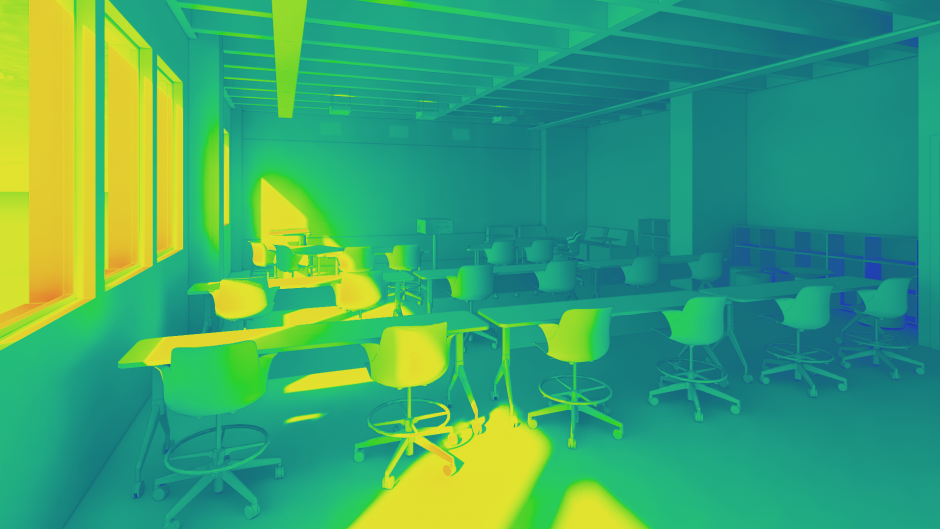
The sensors in Stanley Hall will collect information about the building’s energy use and occupancy levels in near real-time and send that data to a “digital twin,” or virtual simulation-based analysis platform, where the virtual environment can help make decisions about the real-world environment.
Building smarter
The goal is to eventually develop a system that automatically adjusts the building operations in response to the sensor data. The system might dim a room’s lighting or turn down the intensity on the cooling system, for example.
But first, Kim said, they must nail down the capabilities of the 5G connectivity to quickly communicate those conditions.
“5G connectivity is expected to reduce the latency, or time delay, between the monitoring of a building’s condition, generating optimized solutions and adjusting a building’s operations,” he said.
For Kim and Balakrishnan, this research doesn’t stop at Stanley Hall. They strive to see the entire MU campus transformed into a smart campus that uses energy efficiently — by having various building systems communicate with one another to best use their resources in tandem with conditions on campus.
Teaching the next generation
Balakrishnan said the curriculum in the architectural studies department places value on research-based design, and students have many opportunities to be involved in long term research as they work their way through their degree program.
“This is not just going to involve graduate students working on this,” Balakrishnan said. “Sustainability is a high priority for our department in terms of educating design leaders for the future. We’ll also have undergraduate students who will be working on this project.”
The next generation of designers at Mizzou are poised to conduct the research that leads to a smarter campus and a more sustainable future.



